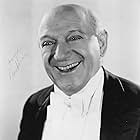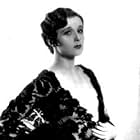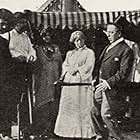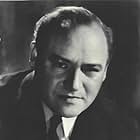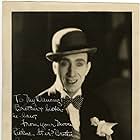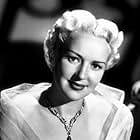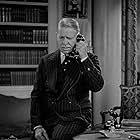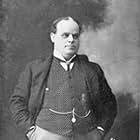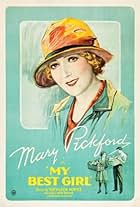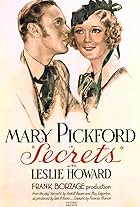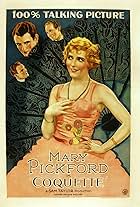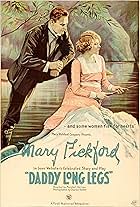Kiki, a French chorus girl is desperate to get into and be someone in show business, come what may.Kiki, a French chorus girl is desperate to get into and be someone in show business, come what may.Kiki, a French chorus girl is desperate to get into and be someone in show business, come what may.
- Director
- Writers
- All cast & crew
- Production, box office & more at IMDbPro
Storyline
Did you know
- TriviaDorothy White's debut.
- ConnectionsFeatured in Mary Pickford: A Life on Film (1997)
Featured review
The transition from silent to talkies was a killer for most silent screen actors and actresses. The more they talked, the more audiences realized their acting abilities were pretty dramatically shallow. Some who had survived learned to say less and display more of a physicality between them and their co-stars.
It's a lesson Mary Pickford should have learned. Right out of the gate, 'America's Sweetheart' became enamored with dialogue. Her first talkie, 1929's "Coquette," taken from a 1927 Broadway play, features her adopting a southern accent. The film is filled with dialogue. But she was awarded an Academy Award Best Actress, where she lobbied the organization's judges for the win. Her next talkie was 1929's "Taming of the Shrew," co-starring her husband, Douglas Fairbanks. Another failure. Next came March 1931 "Kiki," yet another Pickford stage adaptation, this one from an Andre Picard 1918 play. In it, the actress adopts a French accent while the feature film is equally filled with lots of talking.
Pickford plays a chorus girl who has trouble learning her steps. She falls in love with producer Victor Randall (Reginald Denny), who still is in touch with his ex-wife. "Kiki" failed miserably in the theaters, partly because Pickford's loyal fans weren't used to her playing a brash, provocative showgirl who constantly wears tight shorts, who takes off her bra underneath her blouse while standing in front of Victor, and who sits in front of a male theater assistant in only her underwear slowly pulling up long nylon stockings one leg at a time. Her new on-screen persona failed to deliver box-office magic, creating a loss for United Artist studio she and her partners owned.
Today's viewers cite one particular scene where Pickford shines. Early in "Kiki" she gets a chance to display her comical dancing talents. The musical number, choreographed by Busby Berkeley following his Hollywood debut in 1930's "Whoopee!" consists of the 'Goldwyn Girls' and Pickford. The actress' physicality is a pure delight to see, especially her athleticism at the age of 39. She performs several pratfalls and stunts, amusing the on-screen theater audience, but causing much angst to the show's managers and the band's drummer. The 10-minute sketch, which is likened to a Lucy Ball skit, serves as a reminder why Pickford's silent screen movies were so popular. But once the number concludes, she descends back into a dialogue-filled yapper.
"Kiki" was Pickford's second-to-last film. An era was quickly closing in on one of early Hollywood's most influential actresses. For one brief sequence, "Kiki" viewers in 1931 were able to capture the enormous talents of Pickford, a trademark that earned her the nickname "America's Sweetheart."
It's a lesson Mary Pickford should have learned. Right out of the gate, 'America's Sweetheart' became enamored with dialogue. Her first talkie, 1929's "Coquette," taken from a 1927 Broadway play, features her adopting a southern accent. The film is filled with dialogue. But she was awarded an Academy Award Best Actress, where she lobbied the organization's judges for the win. Her next talkie was 1929's "Taming of the Shrew," co-starring her husband, Douglas Fairbanks. Another failure. Next came March 1931 "Kiki," yet another Pickford stage adaptation, this one from an Andre Picard 1918 play. In it, the actress adopts a French accent while the feature film is equally filled with lots of talking.
Pickford plays a chorus girl who has trouble learning her steps. She falls in love with producer Victor Randall (Reginald Denny), who still is in touch with his ex-wife. "Kiki" failed miserably in the theaters, partly because Pickford's loyal fans weren't used to her playing a brash, provocative showgirl who constantly wears tight shorts, who takes off her bra underneath her blouse while standing in front of Victor, and who sits in front of a male theater assistant in only her underwear slowly pulling up long nylon stockings one leg at a time. Her new on-screen persona failed to deliver box-office magic, creating a loss for United Artist studio she and her partners owned.
Today's viewers cite one particular scene where Pickford shines. Early in "Kiki" she gets a chance to display her comical dancing talents. The musical number, choreographed by Busby Berkeley following his Hollywood debut in 1930's "Whoopee!" consists of the 'Goldwyn Girls' and Pickford. The actress' physicality is a pure delight to see, especially her athleticism at the age of 39. She performs several pratfalls and stunts, amusing the on-screen theater audience, but causing much angst to the show's managers and the band's drummer. The 10-minute sketch, which is likened to a Lucy Ball skit, serves as a reminder why Pickford's silent screen movies were so popular. But once the number concludes, she descends back into a dialogue-filled yapper.
"Kiki" was Pickford's second-to-last film. An era was quickly closing in on one of early Hollywood's most influential actresses. For one brief sequence, "Kiki" viewers in 1931 were able to capture the enormous talents of Pickford, a trademark that earned her the nickname "America's Sweetheart."
- springfieldrental
- Sep 11, 2022
- Permalink
Details
Box office
- Budget
- $810,568 (estimated)
- Runtime1 hour 27 minutes
- Color
- Sound mix
Contribute to this page
Suggest an edit or add missing content











